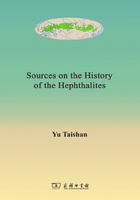
7. Kosmas[103], Christian Topography[104]
[103] Kosma Indikopleustes (literally “Cosmas who sailed to India”) was an Alexandrian merchant and later hermit. He was a 6th-century traveler, who made several voyages to India during the reign of Emperor Justinian. Cosmas was a pupil of the East Syrian Patriarch Aba I and was himself a follower of the Church of the East.
[104] Christian Topography: Kosmas’ work, which contained some of the earliest world maps.
7.1 [III]
7.1.1 And so likewise among the Bactrians and Huns[105] and Persians, and the rest of the Indians and Persarmenians[106] and Medes and Elamites[107], and throughout the whole land of Persia there is no limit to the number of churches with bishops and very large communities of Christian people, as well as many martyrs and monks also living as hermits.68
[105] The Huns here refers to the White Huns, i.e., Hephthalites, who were also influenced by Christianity, mainly Nestorianism, after they entered Central Asia, and this influence was later than that of Zoroastrianism.69
[106] Persarmenians: The dissatisfaction of the nakharars with Arshak II led to the division of Armenia into two sections, Byzantine Armenia and Persarmenia [c. 390]. The former, comprising about one-fifth of Armenia, was rapidly absorbed into the Byzantine state, to which the Armenians came to contribute many emperors and generals. Persarmenia continued to be ruled by an Arsacid in Dvin, the capital after the reign of Khosrow II [r. 330-339], until the deposition of Artashes IV and his replacement by a Persian marzpān (governor) at the request of the nakharars [428]. Although the Armenian nobles had thus destroyed their country’s sovereignty, a sense of national unity was furthered by the development of an Armenian alphabet and a national Christian literature; culturally, if not politically, the 5th century was a golden age.
[107] Elam was an ancient country encompassing a large part of the Persian plateau at the end of the 3rd millennium BCE, but reduced to the territory of Susiana in the Achaemenid period.
7.2 [XI]
7.2.1 But, in the direction of the notable seats of commerce already mentioned, there are numerous others [of less importance] both on the coast and inland, and a country of great extent. Higher up in India, that is, farther to the north, are the White Huns[108]. The one called Gollas[109] when going to war takes with him, it is said, no fewer than two thousand elephants, and a great force of cavalry. He is the lord of India, and oppressing the people forces them to pay tribute. A story goes that this king once upon a time would lay siege to an inland city of the Indians which was on every side protected by water. A long while he sat down before it, until what with his elephants, his horses and his soldiers all the water had been drunk up. He then crossed over to the city dryshod, and took it. ...70 The river Phison[110] separates all the countries of India [lying along its course] from the country of the Huns.[111]71
[108] White Hun refers to the Hephthalites.
[109] Gollas, the king of the White Huns, is obviously a king of the Hephthalites. “Gollas” is an abbreviated rendering of Mihirakula. Kosmas was describing the situation of the White Huns roughly in the period 525-535 CE.72 Thus, the relevant records can be explained as follows: The White Huns, who were once the lords of India (east of the Indus), had already retreated west of Indus by 535 CE, at the latest. It suggested, based on Kosmas’ records, that the “Hūṇas” never crossed the Indus and advanced east, but this is unconvincing.73
[110] Phison refers to Indus.
[111] Mihirakula was defeated by Yasodhaman, but the influence of the Hephthalites did not completely disappear from the north-western subcontinent. From the above-quoted record of Kosmas, one can see that the Hephthalites still remained powerful to the west of the Indus.